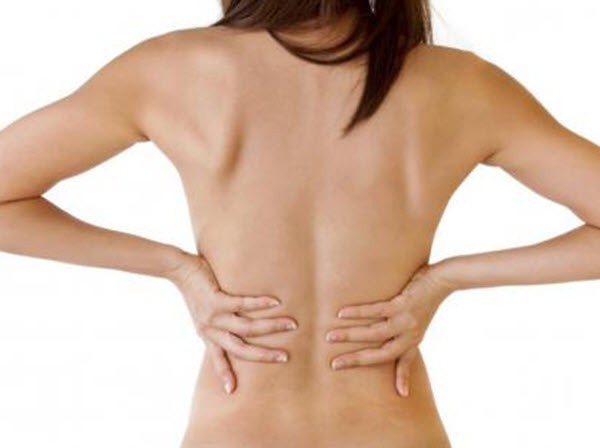The spine is the center of our body structure and our posture, it performs the following functions:
- It is the canal that contains and protects the spinal cord, carrying messages from the brain and controlling almost all body movements.
- It allows us to move and bend.
- It acts as a support for the whole body, as it carries itself and additional weight.
The soft 8-shaped outline of a regular spine perfectly distributes weight and balances, supporting the entire body. If the back loses its natural 8-shape for some reason, then the risk of pain increases significantly. The position of the pelvis is also very important, as the spine rests on the legs through the pelvic girdle. Good, strong muscular support is important for the many bones, joints, ligaments, and other organs to support the spine and work flawlessly. When the dorsal muscles are in good condition, they support the vertebral curves and create a good posture. Therefore, you can understand the importance of training and strengthening your posture muscles, as the spine is subjected to tremendous loads on a daily basis.
Content
Posture control
Main factors
- Constant pressure of gravity.
- Hereditary or genetic factors (for example, if one leg is shorter than the other) are quite common and strongly affect posture.
- Особенные, постоянно повторяемые действия, выполняемые ежедневно.
- Неосознаваемые плохие привычки, такие, как сутулость и сгорбленность.
Individual factors
- Сила или слабость мускулов живота, спины или ног.
- Hip dislocation: Just look at someone who needs surgery to correct a hip dislocation and their gait.
- Curvature of the back: This 5-shaped curve can be too flat or deep.
- Very large belly: obesity or pregnancy.
•/ Straightness of the legs or knees: if they are crooked, it always affects the posture. - Slouching of the neck or shoulders.
- The position of the head in relation to the neck and shoulders: this plays the most important role in posture.
* Side note: In the event that your obesity is of a temporary nature (pregnancy), you will need comfortable clothes, which can be purchased by going Follow the link on an online store of clothes for pregnant women.
Let's take a look at posture.
Posture is not static, but dynamic – even when resting; Muscles move a little continuously, even when we are asleep. Posture is a habit, a learned process, and therefore It can be improved. It is an unconscious behavior that is automatically controlled in any situation, in response to any sudden stimulus—often we sit very upright, or throw our heads back, or move instinctively, oblivious to our actions. But just as we consciously control our movements when we stand, sit down, walk, or perform tasks, so posture can be changed by conscious effort.
Many of us accumulate tension over the years, and as a result, a stiff, even sagging back replaces good posture. We adapt to different postures without even knowing the harm it causes. For example, some dentists twist one shoulder, spending years near the chair in an uncomfortable, unnatural position. Other people in similar situations often shift their weight to one side and cannot find balance without overexerting their muscles in such a position, thereby adding to their fatigue.
Our posture affects our habits. We need to learn to constantly respond to the Earth's gravity. Many, assume the position of least resistance; When we get into the habit of slouching and hunching over, any attempt to straighten our posture becomes very clumsy, so we give up trying and bad posture becomes the norm. We need to work in the face of gravity, not succumb to it. Part of the problem is that we rarely see good posture or follow a role model, so posture curvature starts very early. Good posture is surprising, as almost no one has it. It disappeared along with the principles of old fashion, behavior, or even military bearing. Any military institution can tell you a lot about the poor posture of each of the recruits of the new recruitment.
We don't know how we're going to feel with good posture, although we can recognize it if we see it. A casual glance at any crowd of people will show how low we have fallen, and this decline is especially noticeable in the West. The words "balance" and "weight" go hand in hand with posture, creating an image of a person who stands beautifully and moves gracefully.
Posture is a basic indicator of mood, and it usually reflects our feelings, such as hunched over in grief or sadness, or tension in the neck and shoulders in preparation for defense. We can bend our necks or tense them; Whatever our mood is, it is quite clear to an outside observer and can influence the attitude of others towards us. Posture drastically affects our appearance – even the worst – and more importantly, it definitely affects our physical capabilities, as years with poor posture tire our muscular system. Common sense should tell us that if we ignore our posture, the likelihood of illness and deterioration of health will increase significantly.
To summarize briefly, posture depends on habits; Good posture comes from good habits, bad posture comes from bad habits. Poor posture constantly exposes the spine and back to pressure, while good posture relieves this pressure. We can get rid of bad habits if we want to, and if we persevere in pursuing it. Poor posture can be corrected. But it's useless to talk about posture unless we're going to do something about it, so now we're going to take a look at good posture and learn how to find it.

